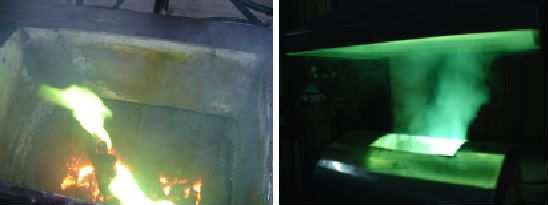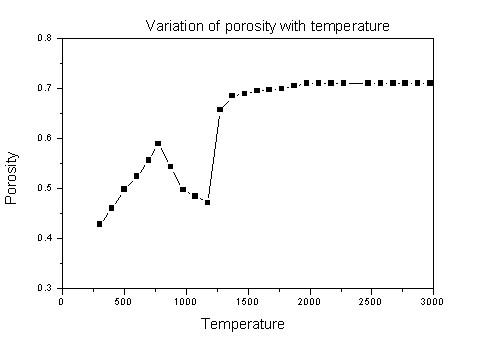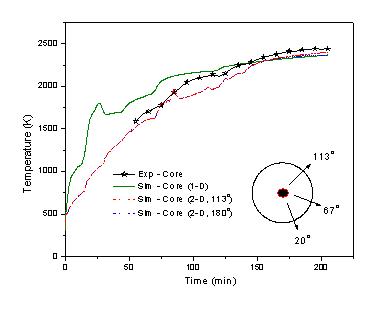MANUFACTURE OF BORON CARBIDE

Boron carbide is produced in a heat resistance furnace using boric oxide and petroleum coke as the raw materials. In this process, a large current is passed through the graphite rod located at the center of the cylindrical furnace, which is surrounded by the coke and boron oxide mixture. Heat is generated at the surface of the electrode, due to which boron oxide reacts with the coke to produce boron carbide (Figure 1).
The process is inefficient in terms of the production of boron carbide as only 15% charge gets converted into boron carbide. No published attempt has been made to optimise the process using mathematical modelling. Also, experimentally not much work has been done. Therefore, in this first ever study both mathematical and physical modelling has been carried out.
A laboratory scale hot model of the process has been fabricated and installed with necessary accessories, such as:
- Powder supply unit
- Electrode cooling unit
- Stainless steel body
- High temperature ceramic wool insulation
Temperature inside the furnace ranges from 2600°C (near the core) to 900°C (near the charge surface).



In mathematical modelling, simultaneous heat and mass transfer model has been developed for the resistance-heating furnace, considering boron carbide formation as a typical carbothermal reduction. Coupled transient, partial differential equations have been worked out. These equations have been solved numerically, using the implicit finite volume method to obtain the profiles of temperature and volume fraction reacted (B4C formation) in the furnace.
After incorporation of the necessary corrections, a good match is found between the computed and experimental results. This gives a fine example that how a mathematical model can be used to improve the physical model. A Graphical User Interface for the process has also been developed. This process has been optimised experimentally now. A 2-D mathematical model with GUI is also available for the process.
Technology Transfer Opportunity
This technology and software are ready to transfer to interested industries (Currently under negotiation with Indian Armour Systems Pvt. Ltd.). Interested industries/person, even to setup a plant or transfer of technology can contact us.
For further details, queries, or publications related to this research, please contact us through our contact information on the website.